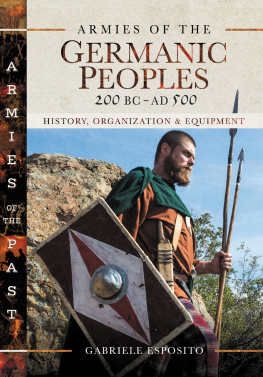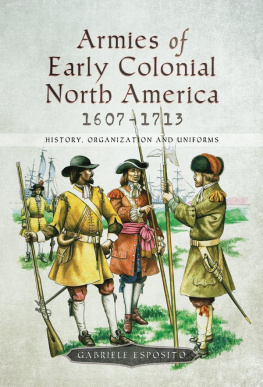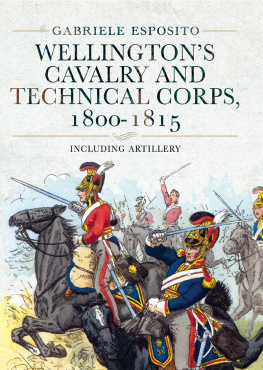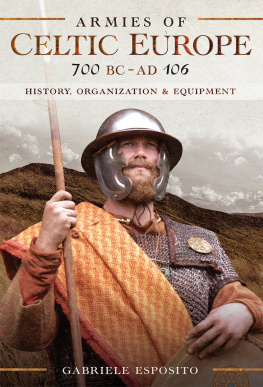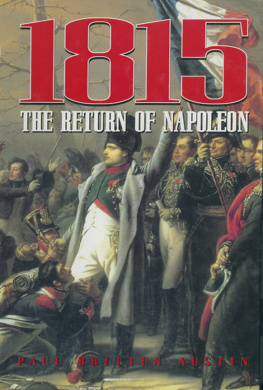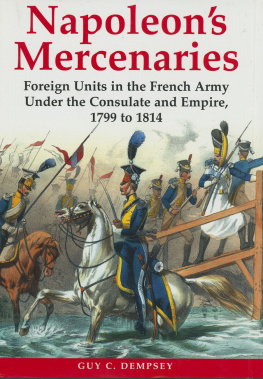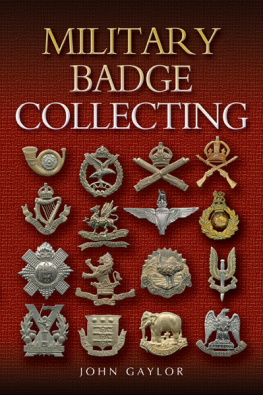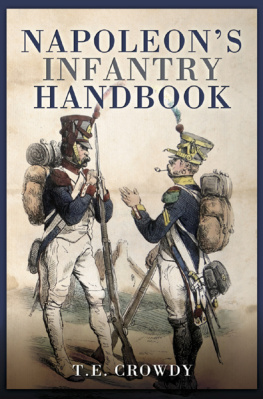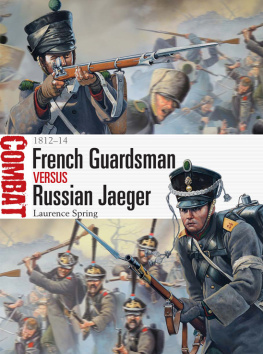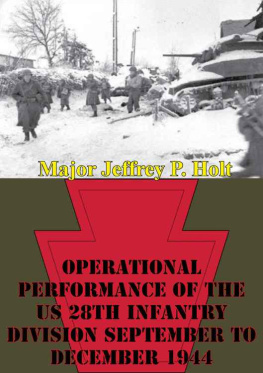Pagebreaks of the print version

Napoleons Infantry
Napoleons Infantry
French Line, Light and Foreign Regiments 17991815
Gabriele Esposito
First published in Great Britain in 2022
by Pen & Sword Military
An imprint of Pen & Sword Books Limited
47 Church Street
Barnsley
South Yorkshire
S70 2AS
Copyright Gabriele Esposito 2022
ISBN 978 1 39900 831 0
The right of Gabriele Esposito to be identified as Author of this Work has been asserted by him in accordance with the Copyright, Designs and Patents Act 1988.
A CIP catalogue record for this book is available from the British Library
All rights reserved. No part of this book may be reproduced or transmitted in any form or by any means, electronic or mechanical including photocopying, recording or by any information storage and retrieval system, without permission from the Publisher in writing.
Pen & Sword Books Limited incorporates the imprints of Atlas, Archaeology, Aviation, Discovery, Family History, Fiction, History, Maritime, Military, Military Classics, Politics, Select, Transport, True Crime, Air World, Frontline Publishing, Leo Cooper, Remember When, Seaforth Publishing, The Praetorian Press, Wharncliffe Local History, Wharncliffe Transport, Wharncliffe True Crime and White Owl.
For a complete list of Pen & Sword titles please contact
PEN & SWORD BOOKS LIMITED
47 Church Street, Barnsley, South Yorkshire, S70 2AS, England
E-mail:
Website: www.pen-and-sword.co.uk
Gabriele Esposito is a military historian who works as a freelance author and researcher for some of the most important publishing houses in the military history sector. In particular, he is an expert specializing in uniformology: his interests and expertise range from the ancient civilizations to modern post-colonial conflicts. During recent years, he has conducted and published several researches on the military history of the Latin American countries, with special attention on the War of the Triple Alliance and the War of the Pacific. He is among the leading experts on the military history of the Italian Wars of Unification and the Spanish Carlist Wars. His books and essays are published on a regular basis by Osprey Publishing, Winged Hussar Publishing and Libreria Editrice Goriziana; he is also the author of numerous military history articles appearing in specialized magazines like Ancient Warfare Magazine , Medieval Warfare Magazine , The Armourer , History of War , Guerres et Histoire , Focus Storia and Focus Storia Wars .
Acknowledgements
T his book is dedicated to my parents, Maria Rosaria and Benedetto, for the immense love and great support that they have given me during all the days of my life. A very special thanks goes to Philip Sidnell, the commissioning editor of my books for Pen & Sword: his love for military history and his passion for publishing are fundamental for the success of our publications. A special mention goes to the production manager of this title, Matt Jones, for his hard work and great competence. Many thanks also to copy-editor Tony Walton, for his precious help and for his friendship. All the pictures published in this book are public domain ones obtained from the magnificent Digital Collections of the New York Public Library. Everyone with an interest in military history can easily browse the vast contents of the latter at https://digitalcollections.nypl.org/ .
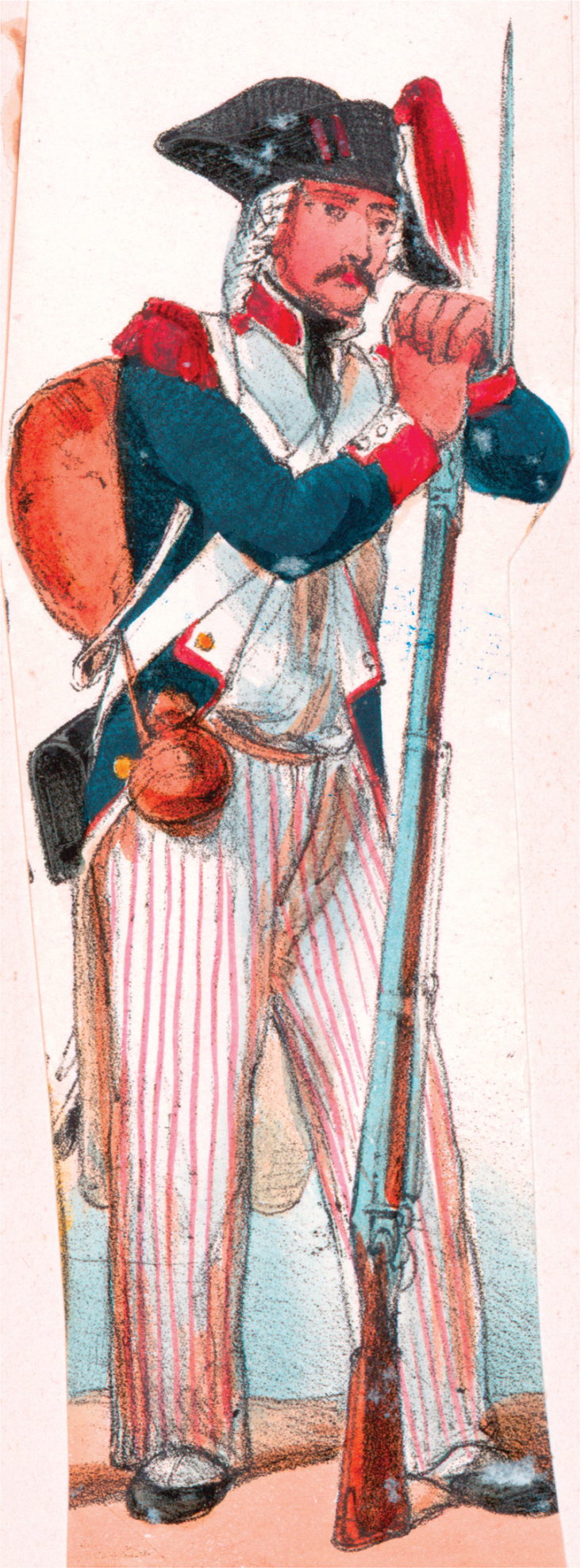
Grenadier of the line infantry with 1793 dress.

Fusilier of the line infantry with 1793 uniform.

Grenadier of the line infantry with 1793 dress.
Introduction
T he main aim of this book is to present a detailed overview of the history, organization and uniforms of the French infantry during the Napoleonic Period. Our analysis will start with a description of the French foot troops evolution during the years 178999, but will later focus on the years that saw the ascendancy and the fall of Napoleons military power (17991815). The infantrymen of the Emperor Napoleon were not all elite soldiers like the members of his Imperial Guard, they did not wear the dashing uniforms of his cavalry and they were not beloved by Napoleon like his artillerymen. However, it was the infantry of the French Army that effectively won most of the battles during the glorious years from 17991812. The French common infantryman was intelligent, aggressive, well-disciplined and extremely resilient: he had total trust in his overall commander and was determined to export the ideals of the Revolution to the other countries of Europe with the point of his bayonet. During the eighteenth century, infantry had played a crucial role on European battlefields, in mighty clashes that were a perfect example of the so-called lace wars, with thousands of disciplined soldiers all professionals, and many of them mercenaries marching in perfect order and firing upon the enemy formations with great regularity; this was the tactic of the foot troops during the century of the Enlightenment. During this time, the leading European royal families struggled against each other for domination of the continent and had their own dynastic armies, which were more like private military forces than national armies in the modern sense of the word. The life of civilians was generally not affected by the ongoing wars, which were seen as private affairs between monarchs. Members of the aristocracy provided the commanding officers of the various military units, but spent very little of their time learning how to train and lead their men. The NCOs and rankers were mostly professionals, who earned a living by fighting for money rather than for a cause. War had its basic rules, which were common to all the European nobles: the idea of total war did not yet exist, and on several occasions military campaigns were simply an instrument of diplomacy.
This situation came to an end in 1792, when the French Revolution started to decisively transform the existing military systems. In 1789, much of the French population rose up in revolt against Louis XVI, one of Europes absolute monarchs. New political ideas were spreading enthusiasm among the people, and the new social class of the bourgeoisie was emerging as the leading force of French society. There was no longer space for the privileges of the aristocracy and the rich clergy: a new middle-class, well educated and much advanced, wanted to become the protagonist of Frances political life. Some years before these events in France, the settlers of the Thirteen Colonies in North America had shown that it was possible to change the existing social order by fighting for freedom: now, in France, every subject wanted to be a citizen and wanted to enjoy certain new rights. The royal government could no longer exert absolute power: the rights of each free man were sanctioned in a constitution (something that the people of England had enjoyed for several centuries) and the participation of the citizens in the political life of their country was made through a representative body the national assembly or parliament. By 1792, after three years of revolution, the French population had already achieved their main objectives, but now the new French state came under attack from other European countries. These nations feared that the French Revolution could penetrate across their borders, dethroning other royal families around Europe. During 1792, the new army of Revolutionary France faced a coalition force led by Prussia at the Battle of Valmy, where, against all odds, the well-drilled professional soldiers of the lace wars, who had been forged by Frederick the Great, were humiliated by the new troops of the French bourgeoisie. From that moment on, the humble but splendid French infantrymen won one victory after the other, after 1796 often under the guidance of the genial and ambitious Napoleon. An entire army had completely changed its nature in just a few years and would dominate the battlefields of Europe for two decades. But how was this possible? And how did the French infantryman become so effective and so superior to his opponent? To find an answer to these questions, a wide range of factors have to be taken into account, starting from the early days of the French Revolution. For what Napoleon inherited when he became First Consul in 1799 was a French Army that had already been completely reformed.



